A poster is the physical support of some type of advertisement, message or artistic design. It generally consists of a sheet of paper, cardboard or some similar material, in which a visual and/or textual or typographic content is inscribed. The shapes and sizes of a sign, as well as the materials used to make it, can vary greatly, depending on its purpose and context of use. But in any case, it usually contains a combination of text and images that capture attention. (Font)
There are several types of posters which are classified according to their informative purpose:
• Informative sign.
• Advertising posters.
• Regulatory posters.
• Promotional posters.
• Artistic or decorative posters.
• Protest posters.
The primary function of posters is to inform. In some cases, they provide information for public use, such as precautions or indications. In other cases, the information may aim to promote products or they may be used as a protest mechanism. In all cases they are vehicles of a message. In other words, they always have the task of being read by someone and generating a reaction of some kind in that person. (Font)
That is why for the activity carried out in the month of August of the workshop "knowing autism a different cognitive style" we created decorative and informative posters referring to the subject matter of AUTISM.
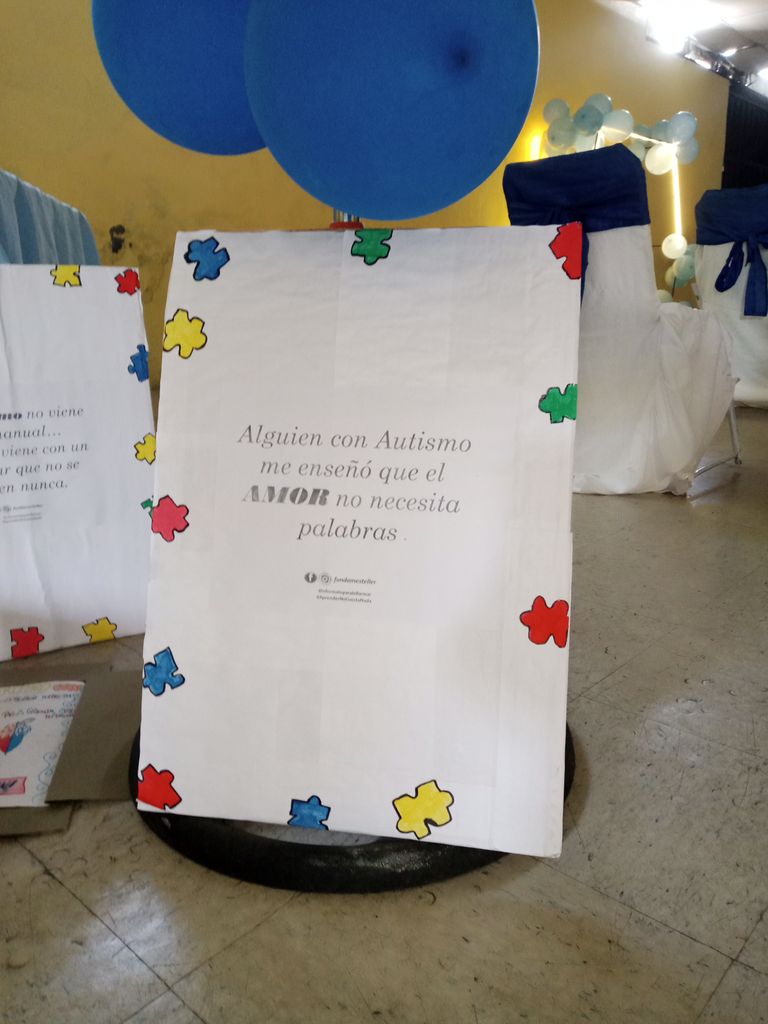
For the preparation it was necessary:
letter
Boom paper or recycling sheet
Cold or tempera painting
brush
Marker
scissors
Paste
Pencil
Information related to the topic to be transmitted
Procedure for making the posters
Once the size of the posters was decided, the cardboard was cut and reinforced with paper mache to harden for one to two days before placing the paper boom.
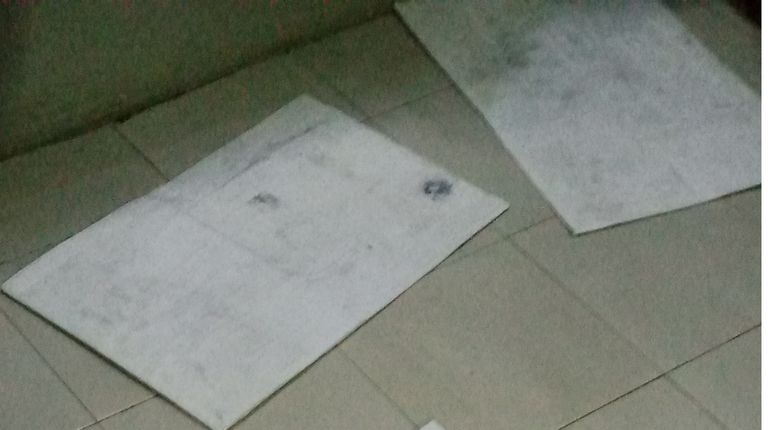
Once dried, the paper was covered or placed on the cardboard, remaining as follows:
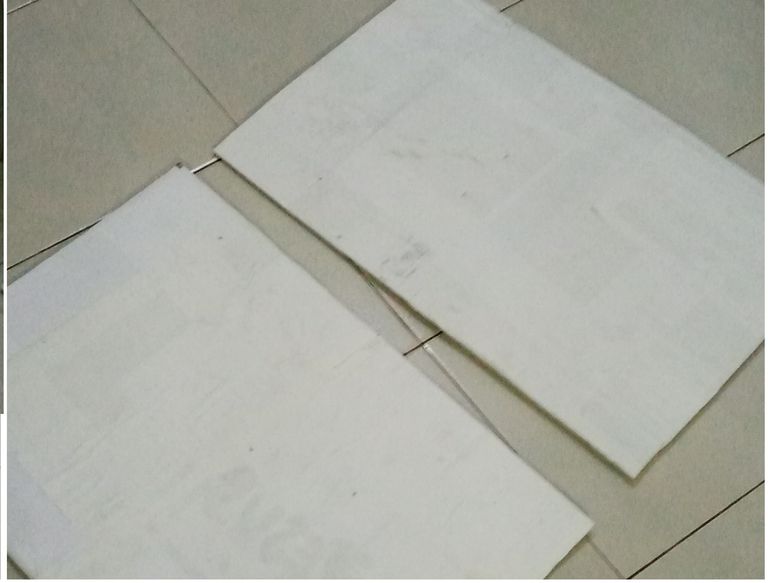
After placing the white paper, we began to decorate the edges, with images of colored puzzle pieces alluding to the event, later the images were outlined with black marking.
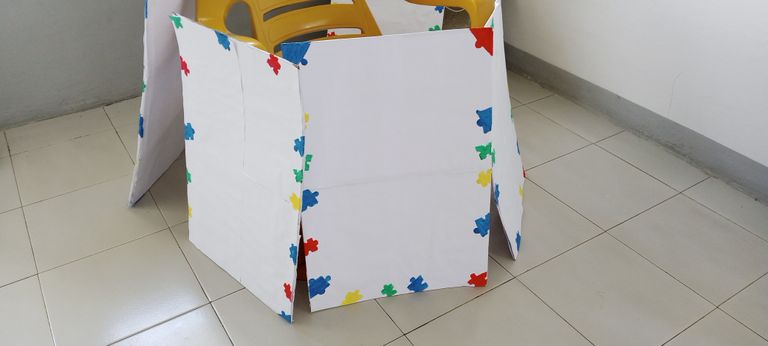
The information that was wanted to be transmitted to the workshop participants was placed in the center
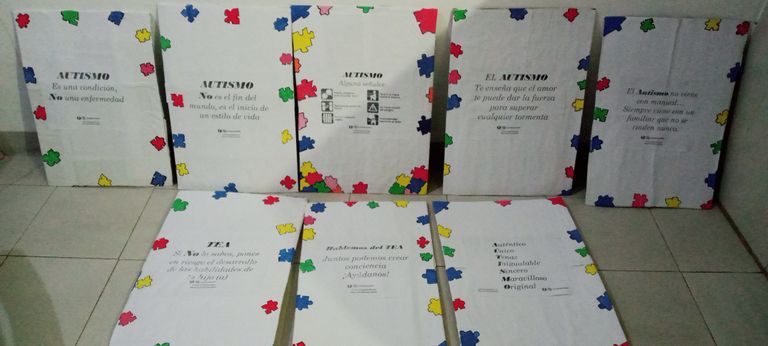
Ready the posters to decorate and inform the day of the event


Spanish / Español
CARTELES DECORATIVO E INFORMATIVOS
Un cartel es el soporte físico de algún tipo de anuncio, mensaje o diseño artístico. Generalmente consiste en una lámina de papel, cartón o algún material semejante, en el que se inscribe un contenido de tipo visual y/o textual o tipográfico. Las formas y tamaños de un cartel, así como los materiales empleados en su fabricación pueden variar enormemente, dependiendo de su propósito y contexto de utilización. Pero en cualquier caso, suele contener una combinación de texto e imágenes que capture la atención. (fuente)
Existe vario tipos de carteles los cuales se clasifican según su propósito informativo:
• Carteles informativos.
• Carteles publicitarios.
• Carteles normativos. .
• Carteles promocionales.
• Carteles artísticos o decorativos.
• Carteles de protesta.
La función primordial de los carteles es informar. En algunos casos brindan información de uso público, como precauciones o indicaciones. En otros casos la información puede apuntar a promocionar productos o bien pueden ser empleados como mecanismo de protesta. En todos los casos son vehículos de un mensaje. Es decir que siempre tienen el cometido de ser leídos por alguien y generar en esa persona una reacción de algún tipo. (Fuente)
Es por ello que para a actividad realizada en el mes de agosto del taller "conociendo el autismo un estilo cognitivo diferente" creamos uno carteles decorativos e informativo referentes al tema a tratas AUTISMO.

Para la elaboración se necesitó:
o Carto
o Papel boom o hoja de reciclaje
o Pintura al frio o tempera
o Pincel
o Marcador
o Tijera
o Pega
o Lápiz
o Información relacionada al tema a trasmitir
Procedimiento para elaborar los carteles
Una vez que se decidió el tamaño de los carteles, se procedió a realizar el corte en los cartones y reforzar con papel mache para endurecer de uno a dos días antes de colocar el papel boom.

Una vez secado se realizó la cobertura o colocación del papel al cartón quedando de la siguiente manera:

Luego de colocar el papel blanco, iniciamos a decorar los bordes, con imágenes de pieza de puzles de colores alusivos al evento, posteriormente se delineo con marcado negro las imágenes.

En el centro se colocó la información que se quería trasmitir a los participante al taller:

Listo los carteles para decorar e informar el día del evento:

